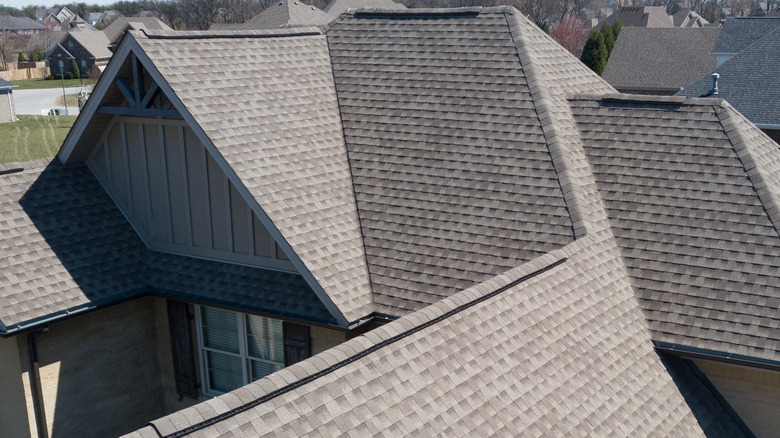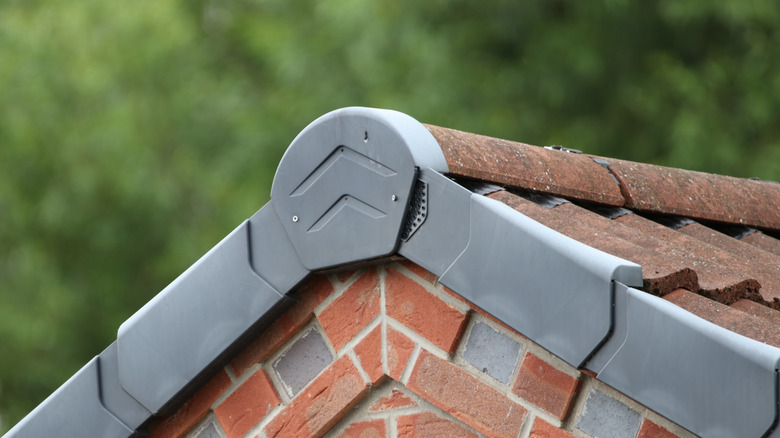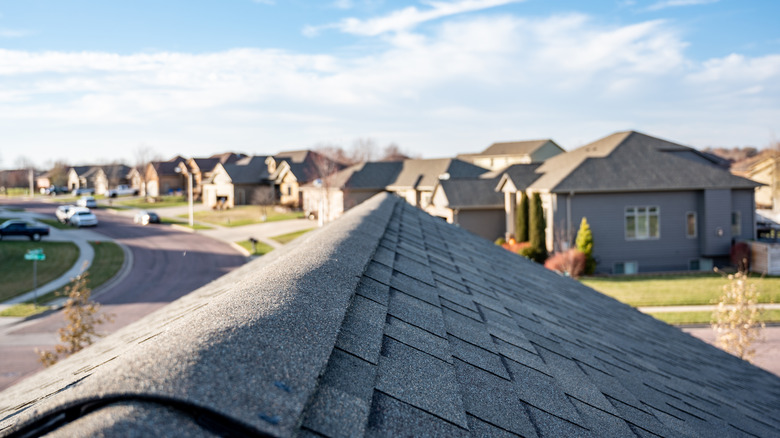What Is A Roof Ridge And What Does It Do?
The roof of any building is one of its most important components, both in terms of function and aesthetics. As Central Roofing explains, a roof's main function is to protect people and their belongings from various weather conditions, such as rain, snow, and sunlight. Additionally, roofs also help insulate buildings, keeping the inside warm in the winter and cool in the hotter months.
According to Owens Corning, there are a number of different components that come together to form the roof. They include the ridge, ridge vent, flashing, hip, roof deck, eave, drip edge, gable, and more.
In this article, we're going to be focusing on the roof ridge. If you're a homeowner or simply someone that's interested in all things construction, you might have heard this term before. Keep reading to find out what a roof ridge is, what it does, and a few other important tidbits you might find useful.
Roof ridge construction
According to Designing Buildings, the word "ridge" refers to "an elongated crest of a hill characterized by strong relief in two directions." In construction terms, however, "ridge" is often used in the context of a pitched roof, which is a roof with two or more sloping surfaces. It's the intersection that occurs at the peak of the roof. The rafters meet at this peak in a typical two-pitched roof. It's most often attached to a ridge board and is covered with ridge tiles, lead, or another covering device.
As Construction Studies describes, a special roofing tile known as a ridge tile is used at the roof ridge as a finishing element for when the roof tiles come to an end. The roof tiles are supported by wooden boards known as rafters that run along the length of the roof. The rafters are attached to a wooden element known as a ridge board. Mortar is used to secure the ridge tile in place, making sure it isn't vulnerable to the elements.
What does a roof ridge do?
Now that you understand what the ridge of a roof is, let's take a closer look at what purpose a roof ridge serves. Weyerhaeuser explains that the ridge beam and ridge board are both parts of a roof's ridge, although they serve different functions. While the ridge beam serves a structural purpose, the ridge board does not. The ridge beam supports the rafters and is what distributes the load to the walls upon which it rests.
Per Weyerhaeuser, a ridge beam is a requirement if the slope of the roof is less than 3 in 12, or 3/12, which means that the roof rises 3 inches for every 12 inches of horizontal run (between point A and B, according to Roofing Calculator and Roof Hub).
The exact dimensions of the ridge beam are usually unique to each structure, based on its various structural factors. The ridge board, on the other hand, is what the rafters rest on. They are only used on roofs where the slope is more than 3 in 12 and less than 12 in 12.
The final component of a roof ridge is the ridge tile. Concept Roof Cleaning notes that the ridge tile plays a key role in protecting the inside of a building from the elements. They are available in various shapes, such as half round, angled, and mono.


